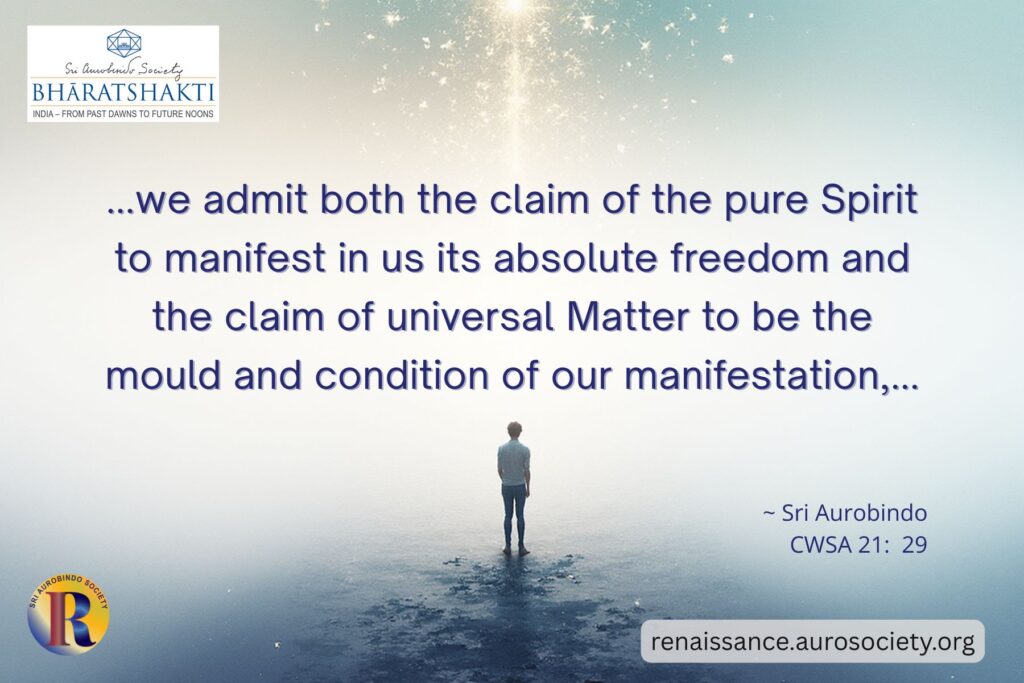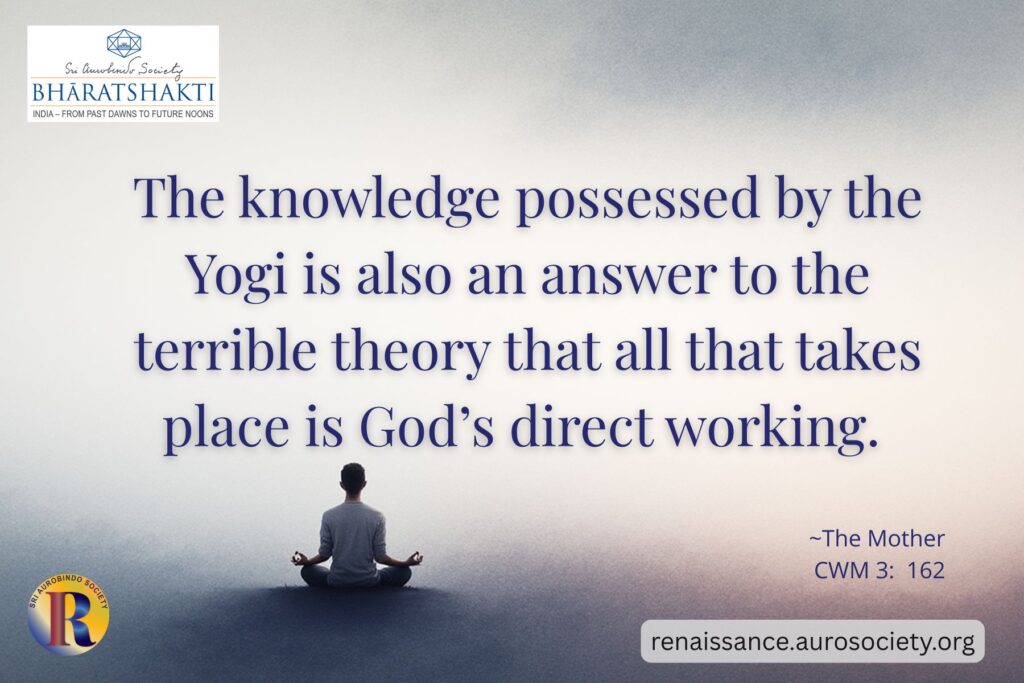Volume III, Issue 10
Author: Narendra Murty
Editor’s note: The Mother once said – “If one reads Sri Aurobindo carefully one finds the answers to all that one wants to know.” (CWM, Vol. 12, p. 206). She also explained that it is not by books that Sri Aurobindo ought to be studied but by subjects. If one reads carefully all that he has said on a subject such as the Divine, Unity, religion, evolution, education, self-perfection, Supermind, etc., one gets an integral and thorough understanding of these subjects.
This approach however does not exclude the value and significance of reading Sri Aurobindo’s books in continuous flow. If one aims to follow how a certain thought has been developed and elaborated, reading from one chapter to the next is important. This is especially true for major works such as The Life Divine, The Synthesis of Yoga, The Human Cycle, The Ideal of Human Unity.
These books pose a challenge to many enthusiasts and sincere seekers. They find them difficult to read. A disciple had once asked a question to the Mother on how one should read Her and Sri Aurobindo’s works.
Recalling the Mother’s reply is helpful:
Q: Sweet Mother, how should one read your books and the books of Sri Aurobindo so that they might enter into our consciousness instead of being understood only by the mind?
The Mother: To read my books is not difficult because they are written in the simplest language, almost the spoken language. To draw profit from them, it is enough to read with attention and concentration and an attitude of inner goodwill with the desire to receive and to live what is taught.
To read what Sri Aurobindo writes is more difficult because the expression is highly intellectual and the language is much more literary and philosophic. The brain needs a preparation to be able truly to understand and generally a preparation takes time, unless one is specially gifted with an innate intuitive faculty.
In any case, I advise always to read a little at a time, keeping the mind as tranquil as one can, without making an effort to understand, but keeping the head as silent as possible, and letting the force contained in what one reads enter deep within. This force received in the calm and the silence will do its work of light and, if needed, will create in the brain the necessary cells for the understanding.
Thus, when one re-reads the same thing some months later, one perceives that the thought expressed has become much more clear and close, and even sometimes altogether familiar.
It is preferable to read regularly, a little every day, and at a fixed hour if possible; this facilitates the brain-receptivity.
~ CWM, Vol. 12, p. 203
The author, in this article, shares his personal experience of trying to understand Sri Aurobindo’s works and how he overcame the initial challenges. Some readers may be able to relate with the author’s account, while others may have had different experience.
Throughout the article, we have also shared some relevant guidance from the Mother.


I want to read Sri Aurobindo but why is he so difficult to understand?
I have heard this from several of my friends when they come to know that I have been reading Sri Aurobindo’s works for almost two decades. Kireet Joshi had once famously observed that “to read Sri Aurobindo requires tremendous brain power.” But what is this Brain Power? In this article, I take my own experience as a guide and cite the difficulties I had faced initially to understand Sri Aurobindo’s writings. I hope this will be of some value for others interested in reading Sri Aurobindo.
I have always been an avid student of philosophy and religion. But initially I never attempted to read Sri Aurobindo. I was in my early thirties when I first picked up his book The Synthesis of Yoga. It was impenetrable. I could not understand a thing!
I read a whole page, but could not tell myself what I had read. Mind you, I have been educated in the English medium. And I have been a voracious reader all my life. I could devour books like anything. So it’s not that I did not have the habit of reading or that my English was weak. But I simply could not make any headway with Sri Aurobindo. Baffled, I gave up.
But I continued with my study of philosophy and religion, of books by other authors.
After a period of five years or so following my first failure, I had a second go at it. Though the overall result was the same, my comprehension level had gone up a bit. I could understand some paragraphs. But I was still not at the stage where I could absorb whole chapters.
I gave up again. But I continued with my study of other authors.
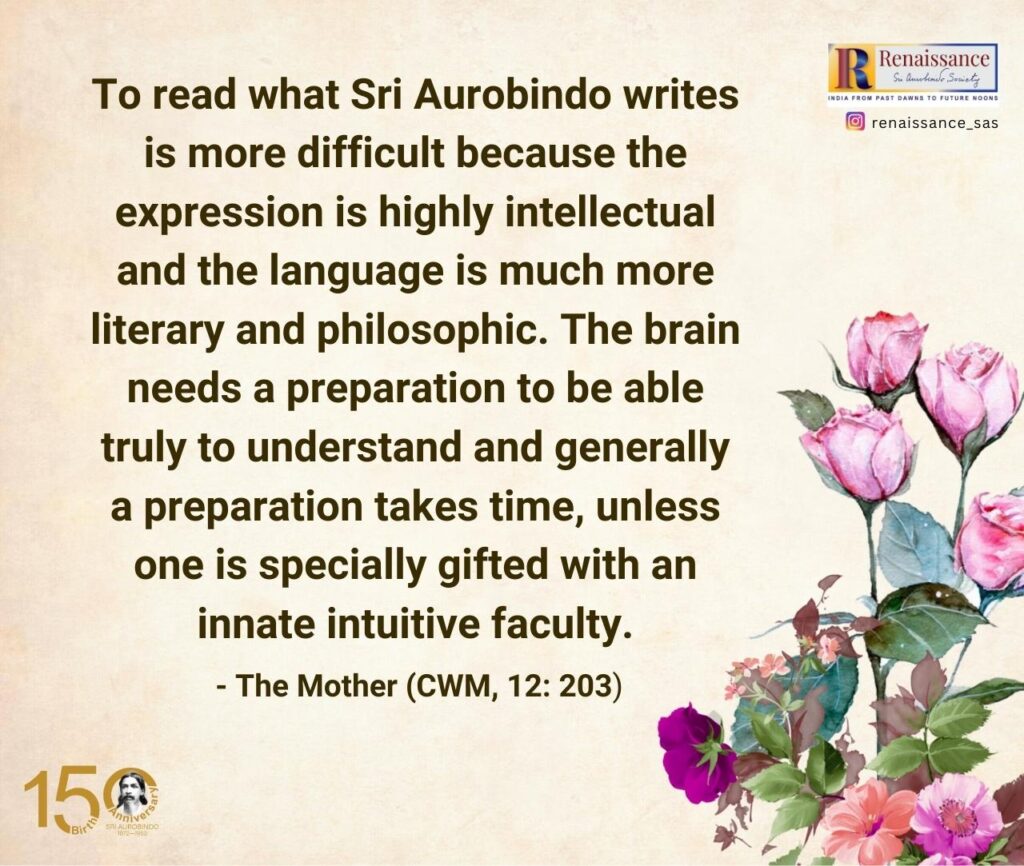
And then it happened, on my third attempt.
I was forty-two years old. And by that time I had read the Gita with detailed commentaries, three Upanishads, and the Yoga Sutras. I had also read the teachings of Sri Ramakrishna, Swami Vivekananda, Swami Yogananda and several other writings on Hindu metaphysics and Buddhist thought. The book that I had picked up this time was Essays on the Gita. And it was crystal clear to me!
After its breath-taking impact on me, I went back to The Synthesis of Yoga. That too revealed its secrets to me. After that there was no turning back. I read and re-read his works. In fact, I came to a stage where no matter what else I read, I always went back to his writing. Repeatedly.
His words continue to be the greatest sustenance of my life.
So what happened? Why did I take ten years and three attempts to understand Sri Aurobindo since my first attempt? Here is what I have understood.
The first and foremost is, of course, the barrier of language. To understand Sri Aurobindo, you have to be really, really good in English.
Your command over the English language should be excellent and your vocabulary, very strong. A moderate or reasonable grasp of English will not do. Because at the time of reading you cannot reach for the dictionary every time you come across difficult words. That would break the focus and concentration which are absolutely essential to follow Sri Aurobindo.
For instance, in the first chapter of The Synthesis of Yoga which is only four pages long, you would come across words like puissant, the cauldron of Medea and penetralia. You can check for yourself whether you can readily grasp the meanings of these terms. Yes, it can be argued that we need not know the meaning of every difficult word that Sri Aurobindo uses provided we are able to follow the drift of his argument. Granted; but that doesn’t eliminate the requirement of a high level of proficiency in the English language.
The second requirement is the ability to focus and concentrate for considerable lengths of time.
Sri Aurobindo uses a highly philosophical language. And sometimes his sentences run into twelve, fourteen or sixteen lines. If your concentration flags while reading through those long sentences, you will not grasp the meaning. Even though the sentences are long, the thread of reasoning and logic, is always perfect! You really have to read and understand to believe how eloquent Sri Aurobindo is and to appreciate the ethereal heights of his thoughts.
Q: Sweet Mother, with what attitude should I read Sri Aurobindo’s books when they are difficult and when I do not understand? “Savitri, The Life Divine,” for example.
Read a little at a time, read again and again until you have understood.
~ The Mother, CWM, Vol. 12, p. 204
These days, due to our exposure to the internet, social media and a surfeit of audio-visual media, we have lost the ability to focus and concentrate on written texts for considerable lengths of time. Reading as such is going out of fashion as we constantly remain hooked to our mobile phones, tabs and laptops.
Reading online is a very different kind of reading compared to reading a physical book. For the most part, online reading is helpful for browsing and skimming. For most people it remains limited to spotting key words, clicking on links and jumping from one webpage to another. It is hardly deep reading, though for a serious aspirant e-books can be good substitute for physical books.
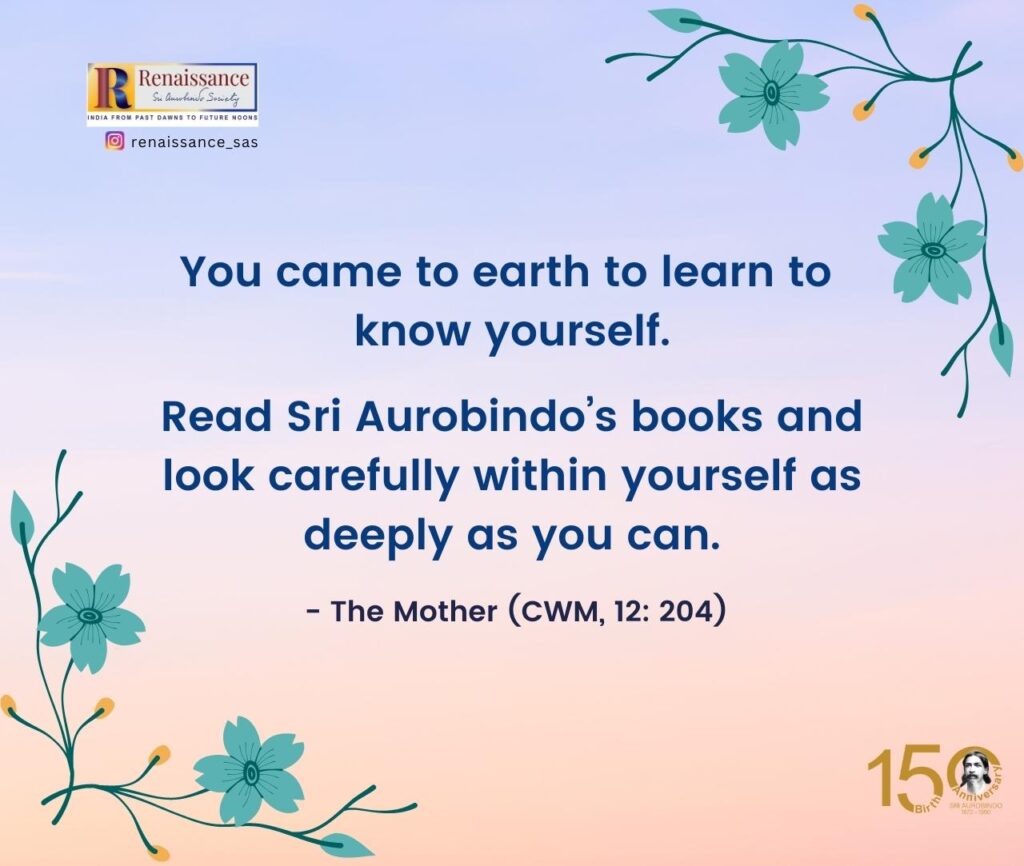
The problem arises when scanning or browsing itself becomes our dominant mode of reading.
Earlier they were used as a means to gather short-term information to be used for immediate need; now they have become an end in themselves thereby impairing our ability to concentrate. As a result, the entire world is suffering from a pandemic of Attention Deficit Disorder (ADD).
Psychologists would tell you that at present this is the most dominant form of psychological disorder the world over. Children have become particularly vulnerable to ADD because of their exposure to mobile phones and video games right from their early years.
What goes for the kids, also goes for the adults.
Reading a book has become a strain for most adults. Because they do not have the concentrating ability to finish whole books, libraries and book stores are closing down in every town and city in the world. In this scenario, it is understandable that the fat volumes of Sri Aurobindo would seem daunting to any reader who doesn’t have the ability to concentrate for at least an hour or two. Because that is what is required to read most of the works of Sri Aurobindo. Ten minutes of glancing through the pages simply will not do.
Q: What is the true method for studying Sri Aurobindo’s works?
The true method is to read a little at a time, with concentration, keeping the mind as silent as possible, without actively trying to understand, but turned upwards, in silence, and aspiring for the light. Understanding will come little by little.
And later, in one or two years, you will read the same thing again and then you will know that the first contact had been vague and incomplete, and that true understanding comes later, after having tried to put it into practice.
~ The Mother, CWM, Vol. 12, p. 204
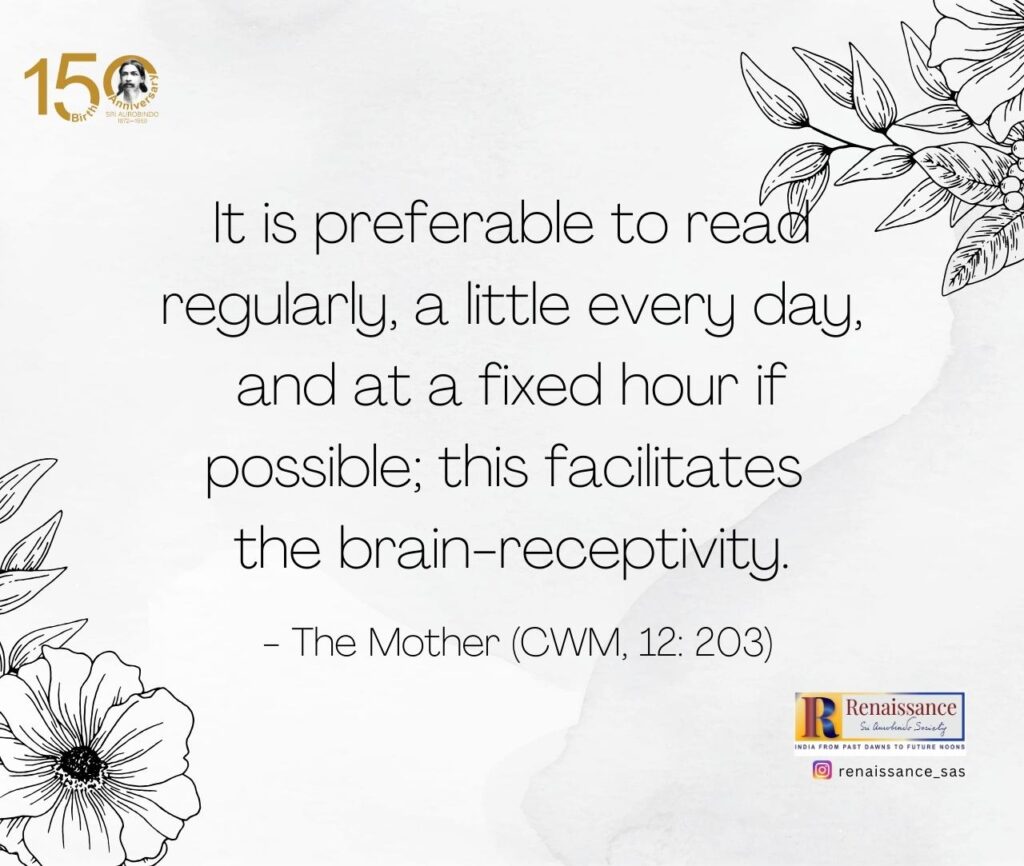
The third essential requirement is background study.
A good background study of Vedanta, Yoga and Sankhya will be very helpful when trying to understand Sri Aurobindo. Because all his major writings draw from these schools of philosophy. Though it is another matter that his own development of Integral Yoga and his vision of the evolution of consciousness and the Supermind go way beyond these schools of philosophy, still a good grasp of these schools of thought helps a lot in understanding his Integral philosophy.
One reason why I succeeded in my third attempt was that by then I had done sufficient background study of Vedanta, Yoga, Sankhya, the Bhagavad Gita, the lectures of Swami Vivekananda, the Yoga Sutras etc.
Thus, I have been forced to conclude that Sri Aurobindo’s writings are not for the beginners. Period. You can approach him only after you have acquired some level of understanding of Hindu metaphysics.
In fact, I would go so far as to say that once you have read Sri Aurobindo, there is nothing beyond. Because his great synthesis encompasses all these schools of philosophy. You can say that his writings are PhD level studies. To take up that study, you have to go through the levels of graduation and post-graduation. Figuratively speaking, that is.
For those who are indeed serious about reading Sri Aurobindo, I would suggest that they should begin with Letters on Yoga. Compared to his other works, the Letters are comparatively easy to understand.
And finally, you have to read and re-read Sri Aurobindo. Repeatedly.
It is not easy to grasp his great works like Essays on the Gita, The Synthesis of Yoga and The Life Divine in one reading. That would require a prodigious capacity. Exceptions are always there but I am talking about the average seeker. So repeated readings are required to truly grasp his stupendous works.
Let me here point out a unique aspect of Sri Aurobindo’s spiritual and philosophical writings. No other God-realized spiritual master, yogi or saint, Eastern or Western, has left us in writing his inner realisations, visions and thoughts the way Sri Aurobindo has done. We are singularly fortunate to have access to this huge body of work of a Mahayogi like Sri Aurobindo written in a modern language for the contemporary man. We are indeed blessed.
Continued in Part 2

~ Design: Raamkumar

